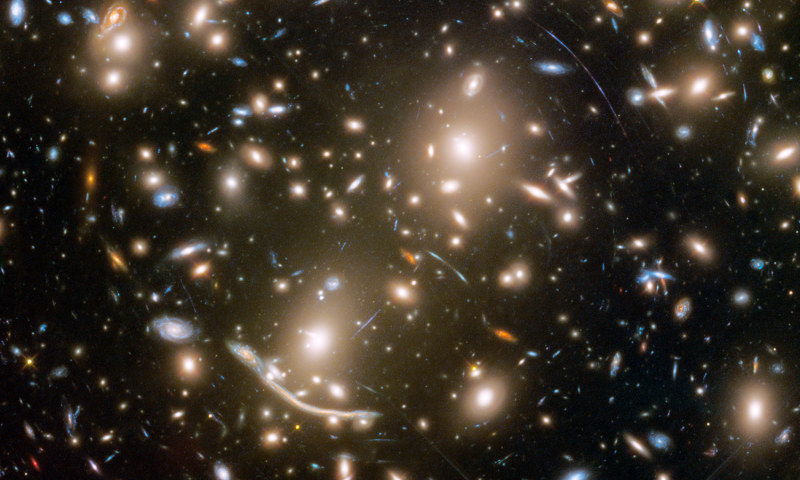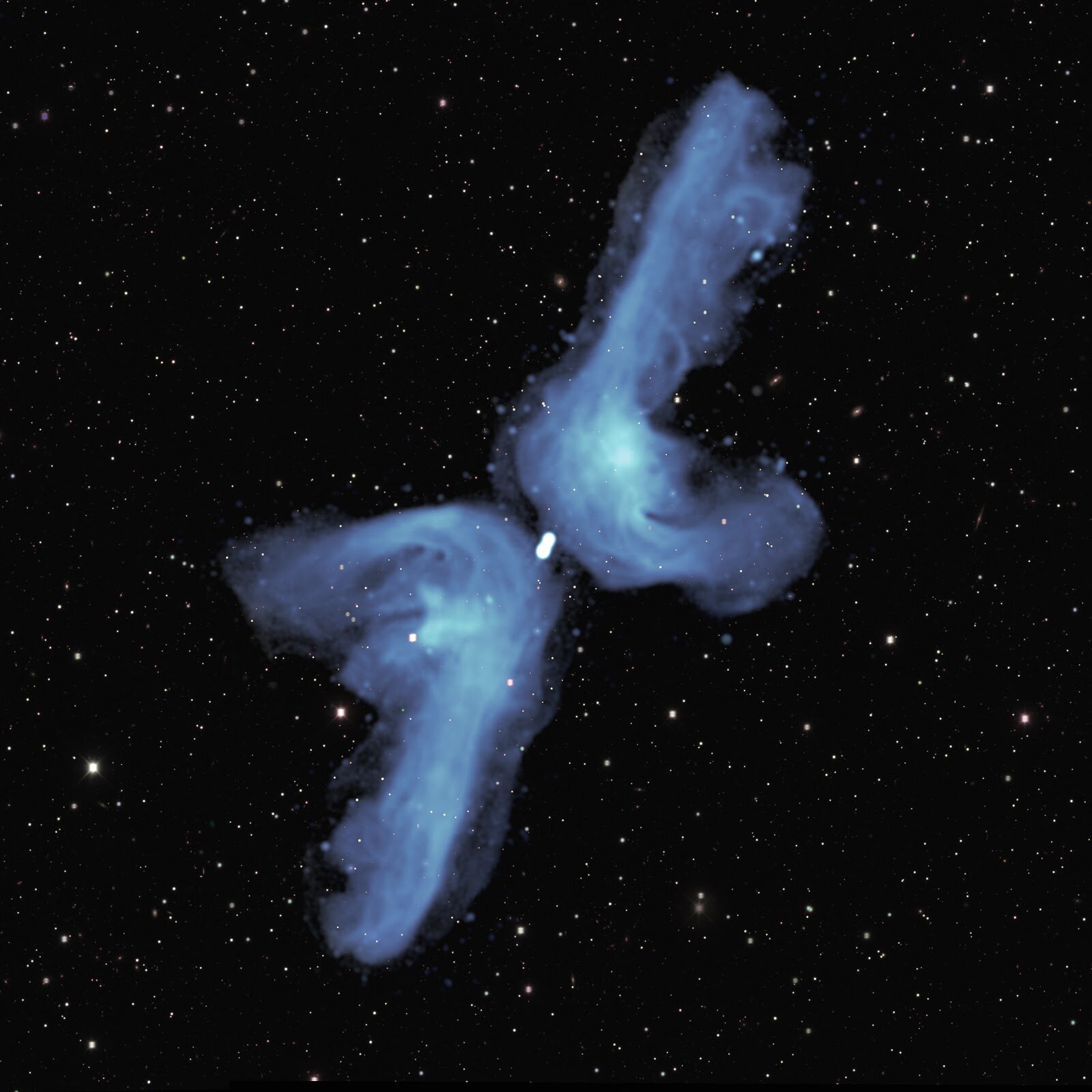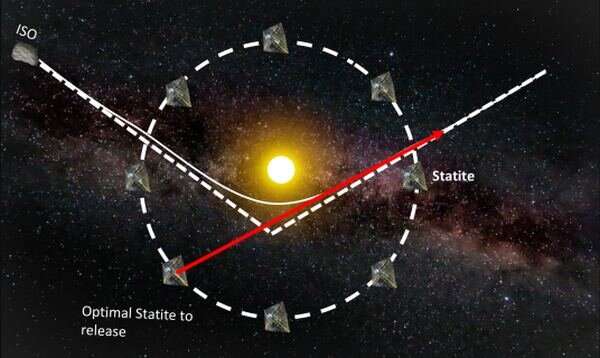|
|
Post by user211 on Apr 22, 2020 10:16:10 GMT
Elon Musk is a strong simulation believer.
YouTube search for Nick Bostrom and take your pick.
The argument does seem highly probable. Very likely, even.
At a basic level think how good video games are now. By the end of the century, say, they maybe indestinguishable from reality.
Therefore, the chances we aren't living in a simulation would appear to be low. Indeed, there maybe whole chains of simulations i.e. simulations within simulations with simualtions and so on.
|
|
|
|
Post by jandl100 on Apr 22, 2020 10:28:41 GMT
|
|
|
|
Post by petea on Apr 22, 2020 12:18:58 GMT
I think you'll find they deleted that one!  |
|
|
|
Post by MartinT on Apr 22, 2020 12:23:56 GMT
|
|
|
|
Post by user211 on Apr 22, 2020 14:21:17 GMT
I don't need to read it. All that is required is a simulation for one person. Not an entire universe. Think about it. |
|
|
|
Post by jandl100 on Apr 22, 2020 21:35:51 GMT
The Antennae Galaxies, NGC 4038 and 4039, two spiral galaxies in the process of colliding and merging. Wide-field views show huge streams of gas and stars pulled out of the galaxies by gravitational tides and stretching away like giant insect antennae.  Detailed views of the galaxies' central bodies show the ongoing maelstrom of colliding gas and dust clouds.  The pink regions are massive star forming regions initiated by the compression of gas clouds by the collision. It's not the death throes of the galaxies, more a re-birth. In about 400 million years things will have calmed down and a massive elliptical galaxy will likely have formed. It seems quite likely that our own Milky Way galaxy will go through a similar process when it merges with the M31 Andromeda galaxy in about 4 billion years time. physicsworld.com/a/hubbles-best-shots-the-antennae-galaxies/ |
|
|
|
Post by jandl100 on Apr 23, 2020 6:50:12 GMT
About 4 billion light years away is a concentrated cluster of hundreds of galaxies, held together by their mutual gravity, called Abell 370. This image taken by the Hubble Space Telescope. The brightest and largest galaxies in the cluster are the yellow-white, massive elliptical galaxies containing many hundreds of billions of stars each. Spiral galaxies—like our Milky Way—have younger populations of stars and are bluish. Just try and imagine our night sky if we lived in that cluster.  Entangled among the galaxies are mysterious-looking arcs of blue light. These are actually distorted images of remote galaxies behind the cluster. These far-flung galaxies are too faint for Hubble to see directly. Instead, the cluster acts as a huge lens in space that magnifies and stretches images of background galaxies like a funhouse mirror. The massive gravitational field of the foreground cluster produces this phenomenon. The collective gravity of all the stars and other matter trapped inside the cluster warps space and affects light traveling through the cluster, toward Earth. The most stunning example is "the Dragon," an extended feature at the bottom of the image that is probably several duplicated images of a single background spiral galaxy stretched along an arc. |
|
|
|
Post by MartinT on Apr 23, 2020 7:48:43 GMT
More remote than the already stunning distance of 4 billion light years. Boggle.
|
|
|
|
Post by jandl100 on Apr 23, 2020 9:19:39 GMT
|
|
|
|
Post by jandl100 on Apr 25, 2020 9:09:45 GMT
|
|
|
|
Post by MartinT on Apr 25, 2020 11:07:55 GMT
What an amazing story!
|
|
|
|
Post by user211 on Apr 25, 2020 12:09:35 GMT
Worth looking at on the big screen.
|
|
|
|
Post by jandl100 on Apr 29, 2020 7:26:50 GMT
Irregular flares of immense energy from a pair of orbiting super-massive black holes [SMBH] over a repeating 12 year cycle have been neatly explained. Every time the smaller SMBH smashes through the accretion disc of material around the larger one it emits a burst of energy. Have a look at a couple of video simulations in this link, fascinating stuff. www.bbc.co.uk/news/science-environment-52464250 |
|
|
|
Post by MartinT on Apr 29, 2020 10:19:20 GMT
Wow - that's a difference in orbital plane I hadn't really thought about before.
|
|
|
|
Post by jandl100 on May 2, 2020 8:28:23 GMT
|
|
|
|
Post by MartinT on May 2, 2020 10:02:57 GMT
Amazing detail, looks like signs of civilisation!
|
|
|
|
Post by jandl100 on May 2, 2020 10:15:59 GMT
Yes, obvious road networks and built up areas.
- there seem to be large boulders on one of the motorways, though.
|
|
|
|
Post by jandl100 on May 9, 2020 7:18:21 GMT
Many galaxies far more active than the Milky Way have enormous twin jets of radio waves extending far into intergalactic space. Normally these go in opposite directions, coming from a massive black hole at the centre of the galaxy. However, a few are more complicated and appear to have four jets forming an 'X' on the sky. Several possible explanations have been proposed to understand this phenomenon. These include changes in the direction of spin of the black hole at the center of the galaxy, and associated jets, over millions of years; two black holes each associated with a pair of jets; and material falling back into the galaxy being deflected into different directions forming the other two arms of the X. Exquisite new MeerKAT observations of one such galaxy, PKS 2014-55, strongly favor the latter explanation as they show material "turning the corner" as it flows back towards the host galaxy; the results have just been accepted for publication in the journal Monthly Notices of the Royal Astronomical Society.  |
|
|
|
Post by MartinT on May 9, 2020 11:33:05 GMT
Those meerkats can see far!
You wouldn't want one of those jets pointing in our direction nearby.
|
|
|
|
Post by jandl100 on May 12, 2020 9:19:42 GMT
You may recall the news over the last few years of the detection of 2 interstellar visitors. A weird elongated rock called Oumuamua, and a more recent interstellar comet called 2L/Borisov. They came into the solar system at a high rate of knots (20 miles a second or so) zoomed round the sun and then sped off back toward interstellar space. Not a lot of time to do much studying of them, and theoretically a lot more of these are expected. So someone has come up with the idea of stationing a whole bunch of probes in the outskirts of the solar system, so when the next interstellar visitor is detected the probe in the best position to do so hacks off on an interception course. In this diagram, a ring of probes (you'd actually need a sphere of them, as the visitor could come in from any direction) orbits the sun way out, an Interstellar Object (ISO) is detected, and the appropriate probe (statite) is triggered to meet up with it. The probe would be allowed to fall in toward the sun, and a light sail would act as guidance mechanism.  Cool! phys.org/news/2020-05-dynamic-orbital-slingshot-cool-idea.html?utm_source=nwletter&utm_medium=email&utm_campaign=daily-nwletter |
|